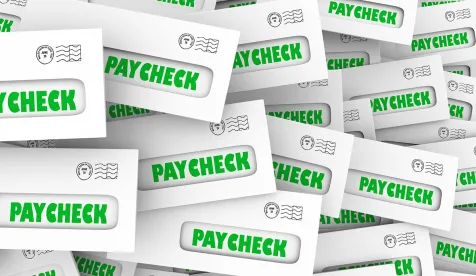The 2020 Coronavirus Aid, Relief, and Economic Security Act (“CARES Act”), which Congress passed in late March 2020 in order to provide relief to businesses and taxpayers affected by the COVID-19 pandemic, included the Paycheck Protection Program (or PPP) loan program – which allowed small business concerns (generally speaking – albeit with some notable, high profile exceptions – those with fewer than 500 employees) to apply for government-backed loans to cover payroll expenses and incentivize employee retention if they certified economic need. The primary appeal of the PPP program, which on its face is highly favorable to borrowers (i.e., very low interest, lengthy repayment term) is that the Small Business Administration (SBA) will forgive these loans if the employer-borrowers maintain headcount, or nearly all of their headcount, through June 30, 2020. When the CARES Act passed, however, the Treasury Department and SBA offered little guidance as to what it meant for a small business concern to certify that it had a current need for such funds to help maintain payroll. Moreover, in light of the economic and public health uncertainty posed by the pandemic when PPP loans first became available in early April 2020, nearly all small businesses had at least some legitimate concerns about their ability to meet payroll demands.
This uncertainty peaked when, likely in response to high profile loans to large restaurant chains and other economically viable businesses, the Treasury Department published informal guidance on April 28, 2020 suggesting that small business concerns may face civil, or even criminal, penalties if they certified economic need for PPP funds in bad faith, such as if they were owned by large companies with adequate sources of liquidity that provided a viable funding alternative. Treasury opined that “it is unlikely that a public company with substantial market value and access to capital markets will be able to make the required certification in good faith, and such a company should be prepared to demonstrate to SBA, upon request, the basis for its certification.” This language sparked fear in many borrowers who wondered how much liquidity it would take such that the certification no longer would be made in good faith, and what the implications were for non-public companies who nonetheless had access to lines of credit or investors. At the same time, the Treasury Department announced a safe harbor provision, reassuring borrowers that if they certified economic need for the PPP loans but, in fact, had alternative sources of liquidity sufficient to support their ongoing operations in a manner that was not significantly detrimental to their business, they could return the PPP loan proceeds by May 7, 2020 without consequence. That safe harbor deadline was subsequently extended to May 14, 2020, with a promise by Treasury to further explain what it meant by a good faith need for PPP funds. Absent that guidance, however, borrowers panicked as to whether to return their PPP loans before losing the safe harbor window.
Just one day before the safe harbor window closed, the Treasury Department finally updated its informal guidance with further information. Although the SBA still intends to review individual PPP loan files of all borrowers that received PPP loans in excess of $2 million (see answer to Question 39), as well as other loans as appropriate, and all borrowers must be able to demonstrate that “current economic uncertainty” at the time of the PPP loan application “ma[de] th[e] loan request necessary to support the ongoing operations of the applicant,” Treasury and the SBA agree that any borrower that, with its affiliates, received PPP loans with a principal amount of less than $2 million will be deemed to have made the required certification concerning the necessity of the loan request in good faith (see answer to Question 46). SBA determined this safe harbor is appropriate because borrowers with loans below this threshold are generally less likely to have had access to adequate liquidity in pandemic-related economic conditions than borrowers that obtained larger loans. As a practical matter, SBA acknowledged this threshold also helps the agency focus its audits on larger loans where compliance efforts yield higher returns. Even those who received in excess of $2 million in PPP loans may be able to establish economic necessity “based on their individual circumstances in light of the language of the certification and SBA guidance.” Though this answer still lacks specificity, borrowers of more than $2 million may nonetheless breathe a sigh of relief because the SBA assured that, if it determines the borrower lacked need for the funds, it will seek repayment of the outstanding loan balance and inform the lender that the borrower is not eligible for loan forgiveness. In that case, the borrower will still be required to repay the loan (albeit on still very favorable terms), but faces no further consequences: “If the borrower repays the loan after receiving notification from SBA, SBA will not pursue administrative enforcement or referrals to other agencies,” and the lack of economic necessity “will not affect SBA’s loan guarantee.”
Treasury’s May 12 guidance helps quell the fears sparked by its April 28 guidance. Although fraudulent PPP loan applications may still result in serious consequences, good faith loan applications, particularly those netting loans in principal amounts under $2 million, are unlikely to result in significant further enforcement action.




 />i
/>i

